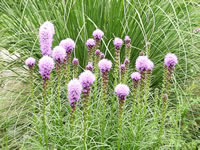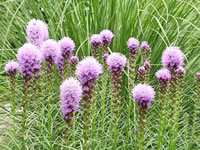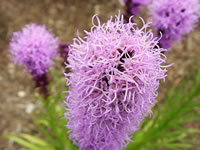How to Grow and Care for Blazing Star PlantsLiatris spicataThe Blazing Star plant, Liatris spicata is an interesting perennial that produces 1-3 foot spikes of bright purplish-pink or white flowers in late June to early fall. Blazing Stars are sometimes called Gayfeathers or Snakeroot plants. They are an ideal plant to grow in your butterfly garden. |
||||
Growing Requirements for Liatris PlantsBlazing Star plants are hardy when grown in USDA zones 3-10Liatris performs best when it is grown in full sun, but will tolerate a bit of light shade. They do not like soggy soil during the winter months so good drainage is extremely important!
|
||||
|
||||
Search The Garden Helper:


